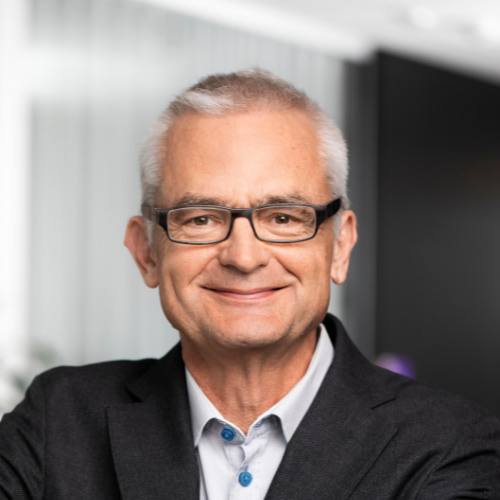
Safe and sustainable chemicals drive business opportunities and societal transitions
Constant innovation in designing new chemicals and materials brings potential health and environmental risks. TNO aims for a paradigm shift by integrating safety and sustainability at the earliest stages of product development. TNO expert Wouter Fransman discusses the opportunities and challenges of Safe and Sustainable by Design (SSbD) with consultant Michael Persson, who has over 30 years of R&D experience in the chemical industry. ‘The best motivation for companies to adopt SSbD is to help them see the business opportunities it offers’.
Michael Persson is a Senior Advisor at Chalmers Industriteknik, associated with Chalmers University of Technology in Gothenburg. With over 30 years at Nouryon (formerly AkzoNobel), he has held various R&D management positions, including innovation manager for the last eight years. Persson has extensive experience with silica nanoparticles and other chemicals for industries such as foundry and paper.
Recently, Persson has seen growing interest in Safe and Sustainable by Design (SSbD) within the chemical industry. He remarks, 'SSbD has been an integral part of R&D since the 80s. To me, it’s primarily a matter of using common sense in the daily R&D activities.'
Webinar: The Future of chemicals is Safe and Sustainable by Design
Watch our webinar, hosted by TNO and VNCI. Learn about TNO's innovative approach, VNCI's vision, and practical insights from companies implementing SSbD.
Underpinning common sense with science
Wouter Fransman, a Principal Investigator at TNO, agrees with Persson: 'The philosophy of SSbD is indeed similar to what has been practiced in previous decades.'
'However, the world has changed significantly. Despite current legislation, adverse effects on human health and the environment of chemicals' production, use, and disposal are quickly highlighted on social media, leading to instant reputational damage for companies. The stakes are higher, and products are more complex. For instance, risk assessment of products becomes more complicated when considering particles, molecules, and chemical combinations. At TNO, we support common sense with science, data, and models.'

'SSbD helps companies see the business opportunities, leading to the most promising innovations and successes.'
Driving industry innovation
Wouter Fransman sees an important role for SSbD in bridging the gap between industry and regulators. 'There is a growing challenge between companies driven by business opportunities and governments pushing for precautionary measures. TNO aims to connect these two perspectives.'
Michael Persson believes SSbD will propel the industry forward. 'SSbD minimises business risks while identifying the right opportunities. The industry's current fear of making mistakes, especially in large companies, is a threat to radical development. SSbD helps companies see the business opportunities, leading to the most promising innovations and successes.'
Risk minimisation through collaboration
Illustrating the business opportunities of close collaboration between industry and regulatory bodies, Michael Persson recalls: 'In 2011, working for an AkzoNobel subsidiary, we received many customer inquiries about nanomaterials. I suggested we needed greater transparency. As a major supplier of nano silica materials, we couldn't afford mistakes, not even from competitors. We decided to collaborate with the researcher in the toxicology area and Swedish agency responsible for new chemical regulations. This provided early warnings and allowed us to offer an industrial perspective. Risk minimisation remains our primary reason for engaging in regulatory projects. With SSbD, we aim to strategically position the company for the future.'
Whitepaper Safe and Sustainable by Design
Read everything about designing safe and sustainable chemicals our whitepaper ‘The future of chemicals is Safe and Sustainable by Design’.
Systematic approach to SSbD
TNO helps the industry balance functionality, safety, and sustainability by implementing a systematic and integrated SSbD approach early in product innovation. This includes defining criteria for functionality, safety, and sustainability, quick screening of selected aspects, transparent visualisation of SSbD factors, and evaluation and decision support.
Michael Persson appreciates TNO's systematic approach: 'It draws on pharmaceutical industry insights for safe drug development. Early-stage risk assessment using in silico models and AI can save time and money, and prevent reputational damage. While the R&D process is more complex than 20 years ago, we have more tools to get it right.'
Weighing societal benefits against potential harm
'I like the parallel to the pharmaceutical industry,' says Wouter Fransman. 'Society tends to accept more issues from the chemical industry than from pharmaceuticals. Regarding SSbD, we need a societal debate on acceptable incident levels. Legislation is moving towards balancing the benefits of chemicals against potential harm. In the near future, chemical companies must demonstrate their products' added value relative to any negative side effects.'
TNO's Decision Support System (DSS) transparently scores and visualises SSbD parameters. This allows innovation managers in the chemical industry to make well-considered decisions about substances, materials, or products early in the innovation process, enabling timely design adjustments to minimise risks.

'Research institutes like TNO can play a vital role in building that bridge and providing data-driven solutions that benefit both parties.'
Decision Support in HARMLESS
The DSS is being further developed in the EU 'HARMLESS' project, aimed at creating new tools, guidance, and decision support for balancing functionality versus risk in developing next-generation nanomaterials. TNO leads the tool development process, which will finalise a user-friendly DSS for complex nanomaterials in 2024.
Wouter Fransman explains, 'These tools objectify common sense questions at an early R&D stage. We aim to align with the European SSbD framework to keep pace with legislation. The project is data-driven, gathering extensive in vitro and in vivo toxicity and exposure data to better predict hazards and assess risks of these complex materials.'
Michael Persson appreciates TNO’s industry-focused approach in the project. 'TNO scientists understand the business, aiming to create value for companies rather than just writing scientific reports.' He is also impressed by the DSS, stating, 'While we are only at a base level, the DSS has great potential to improve material analysis and decision-making in the R&D process, benefiting development times, costs, and societal impacts. Ultimately, it could enhance European competitiveness.'
Getting started with SSbD
What are Fransman’s hopes for SSbD? 'Many have discussed SSbD for the past decade, but implementation is lacking. Our mission is to move from discussion to action. While there are many frameworks and opinions, few provide clear guidance for industry implementation. We aim to offer that clarity. Alongside strategic advice and DSS tools, we provide an in vitro testing lab for experiments and measurements. This multidisciplinary approach and applied knowledge are what our partners value in TNO.'
Michael Persson adds, 'I hope regulators will collaborate more with industry and science to improve regulatory quality. Bridging the gap between industry and legislation can create business opportunities and address societal challenges like the energy transition. Research institutes like TNO can play a vital role in building that bridge and providing data-driven solutions that benefit both parties.'
Get inspired
TNO’s approach for safe and sustainable chemicals innovation


TNO launches LICARA Innovation Scan



